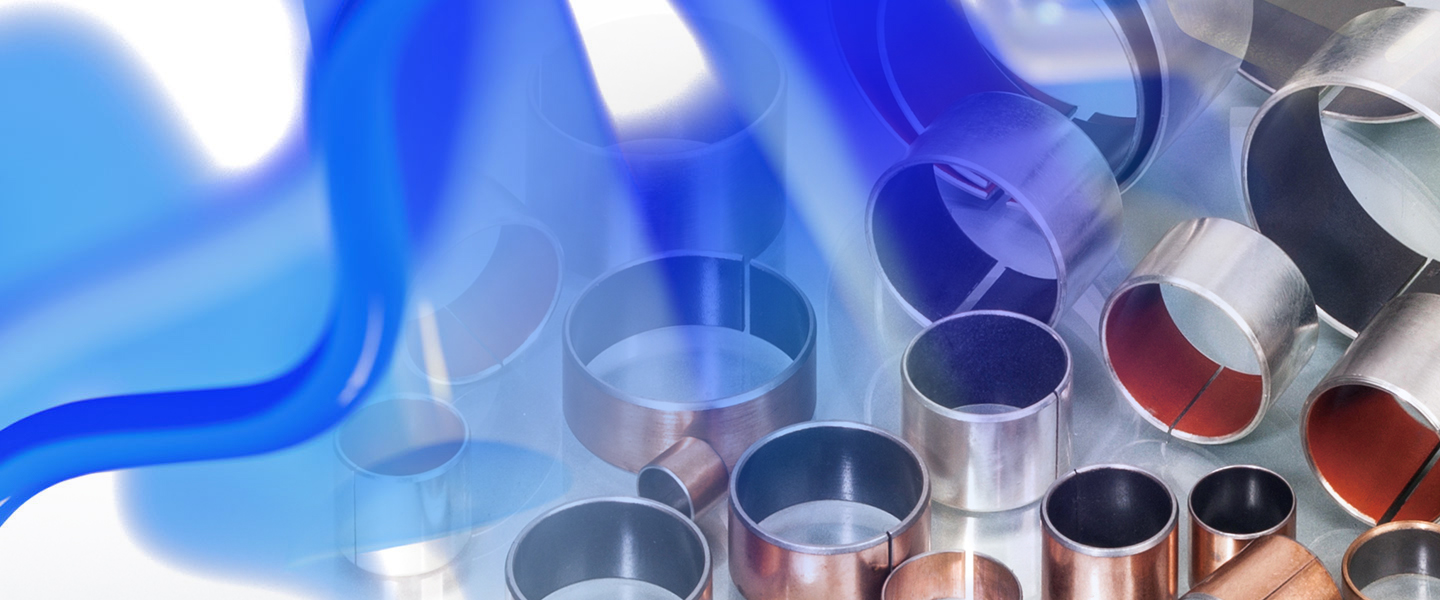- Home
- About
- Product
- Size
- Data
- The meaning of self-lubricating bearings
- PV Value Calculation for Bearings - Definition
- The maximum allowable PV value
- The design of the matching housing bore - straight sleeve bearing
- Matching housing bore design - flange bearing
- The design of the matching shaft
- Matching shaft surface roughness
- Matching shaft hardness
- Matching shaft surface treatment
- Mechanism design of matching shafts
- Factors that affect the life of the bearing
- The formula for calculating the press-in force F during assembly
- Straight sleeve assembly method
- Flanging assembly method
- Thrust gasket, plate assembly method
- Inspection method for the outer diameter of the rolled bearing
- Inspection method for the inner diameter of the rolled bearing
- Test method for thrust sheets
- Surface roughness comparison table
- Plain bearing technical parameters consultation form
- Application
Structural characteristics
The metal composite self-lubricating material is based on high-quality low-carbon steel, sintered spherical porous copper powder layer in the middle, and wear-resistant lubricating material based on PTFE is used as the bearing working layer on the surface, which has excellent mechanical bearing capacity, and the intermediate copper powder layer can not only transfer the heat generated during the operation of the bearing in time, but also improve the bonding strength of the plastic layer and the substrate. PTFE is designed for a completely dry friction state and has been developed in a variety of materials based on lubrication, coefficient of friction and durability requirements. PU's PTFE metal composites provide the best performance over the widest range of loads, speeds, and temperatures, with or without external lubrication.
Abrasion resistance
PU-1 has excellent abrasion resistance, mainly due to the special molecular structure of PTFE. PU-1 wear can be roughly divided into three stages, and the corresponding coefficient of friction also has three conditions, as shown in the figure below:
1) "Run-and-close" stage: the PTFE mixture of the surface layer is transferred to the dual surface to fill the pits on the dual surface and form a transfer film, at this time, the friction coefficient is large, and the wear rate of the material is faster. As shown in the I. curve in Fig.
2) "Stable" wear stage: The friction after the running becomes the friction between PTFE, which has a low and stable coefficient of friction and a low and stable wear rate of the material. This is shown in the area II curve in the figure.
3) "Sharp" wear phase: The consumption of PTFE lubricant in the pores of the porous layer does not allow sufficient lubricant to be obtained between the friction interfaces. The friction surface is poorly lubricated, the coefficient of friction rises rapidly, and the wear rate of the material also accelerates sharply, until 70% of the bronze is exposed, and the life of PU-1 is nearing the end. As shown in the III curve in Fig.
Metallographic pictures
Note: The products in the picture can also choose different substrate materials according to different working conditions, such as: bronze substrate (PU-1B), stainless steel substrate (PU-1S), and lead-free (PU-1W) and other formula products.
Product Applications
Agricultural machinery: tractors, combine harvesters, crop sprayers, bulldozers, graders, etc.;
Automotive industry: power steering pumps, steering thrust gaskets, disc brakes, shock absorbers, door hinges, wipers, chair recliners, air valves and solenoid valves, etc.;
Office and business machinery: copiers, fax machines, printers, mail processors, etc.;
Hydraulic components and valves: gear pumps, piston pumps, vane pumps, ball valves, butterfly valves, cylinders, cylinders and other hydraulic components, etc.;
Household appliances: refrigerators, air conditioners, vacuum cleaners, sewing machines, washing machines, microwave ovens and fitness equipment, etc.;
and other logistics machinery, packaging machinery, textile machinery, port machinery, mining machinery, forest machinery and various construction machinery and equipment.
The main factors that affect lifespan
1) The effect of PV value
The PV value is an effective indicator to determine the wear life of PU-1. If a longer life is required, the PV value must be reduced.
2) The influence of ambient temperature
The higher the ambient temperature, the shorter the service life of PU-1.
3) Effect on the couple
When the matching parts are made of alloy steel or hard chrome plated shaft, and the surface roughness is in the range of Ra=0.4~0.63, the service life of PU-1 bearings can be significantly improved.
In addition to the standard products shown in the catalog, special products can also be offered or ordered according to customer requirements.







